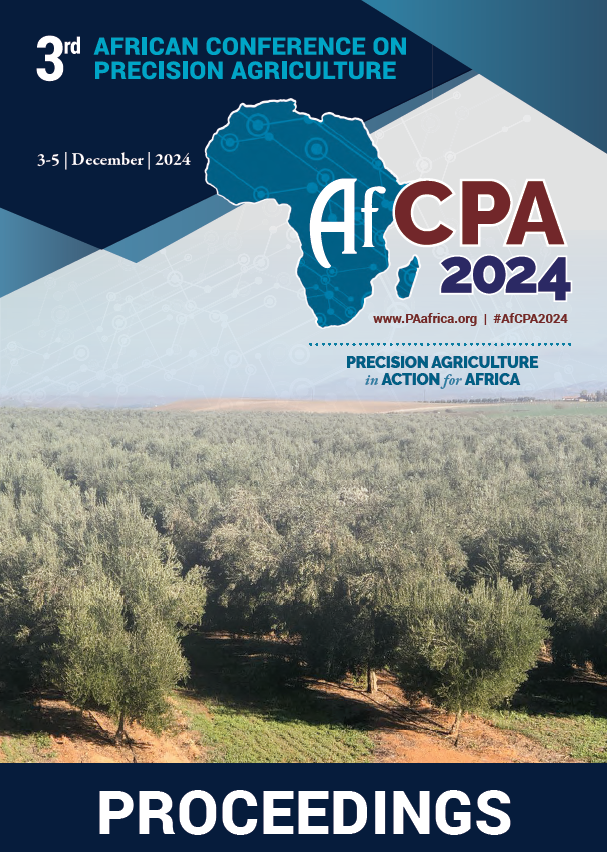Download the Conference Proceedings
Proceedings
Authors
| Filter results6 paper(s) found. |
|---|
1. Mapping African soils at 30m resolution - iSDAsoil: leveraging spatial agronomy in farm-level advisory for smallholdersField level soil data has been the foundation of agronomic advisory, but traditional methods involving on-farm sampling are too expensive for a large proportion of African smallholders. Building on the work of the African Soil Information Service (AfSIS), Innovative Solutions for Decision Agriculture (iSDA) and partners have created an agronomic soil database which covers the entire African continent at a spatial resolution of 30 m. “iSDAsoil” combines remote sensing data and other... J. Crouch |
2. The Vision of Future Earth Observation for AgricultureThe main objective of EO4AGRI is to catalyze the evolution of the European capacity for improving operational agriculture monitoring from local to global levels based on information derived from Copernicus satellite observation data and through exploitation of associated geospatial and socio-economic information services. EO4AGRI assists the implementation of the EU Common Agricultural Policy (CAP) with special attention to the CAP2020 reform, to requirements of Paying Agencies, and... K. Charvat, V. Safar, H. Kubickova |
3. SmartAfriHub for SmartAgriculture capacity buidling in AfricaDigital Innovation Hubs (DIH) are multi-actor ecosystems that support farming communities in their digital transformation by providing a broad variety of services from a one-stop shop. DIHs purpose is to provide a social space for community of practices; provide access to digital technologies and competencies; provide access to infrastructure and tests digital innovations (“test before invest”); provide development playground... K. Charvat, C. Miderho , A. Obot, T. Löytty, H. Kubickova |
4. Mapping African soils at 30m resolution - iSDAsoil - Western Time Zones“iSDAsoil” combines remote sensing data and other geospatial information with carefully stratified point samples subjected to spectral analysis and traditional wet chemistry reference analysis. State of the art machine learning techniques were used to create digital maps of 17 agronomically important soil properties at 3 depths, including estimates of uncertainty. iSDAsoil is designed to encourage sharing and we hope that the owners of other soil and agronomic data, in industry... J. Crouch, K. Shephard, M. Miller, J. Collinson, P. Singh, P. Pypers, R. Van den bosch, C. Van beek, M. Chernet, S. Aston |
5. Mapping African soils at 30m resolution - iSDAsoil - Eastern Time Zones“iSDAsoil” combines remote sensing data and other geospatial information with carefully stratified point samples subjected to spectral analysis and traditional wet chemistry reference analysis. State of the art machine learning techniques were used to create digital maps of 17 agronomically important soil properties at 3 depths, including estimates of uncertainty. iSDAsoil is designed to encourage sharing and we hope that the owners of other soil and agronomic data, in industry... C. Van beek, M. Chernet, S. Aston, M. Miller, J. Collinson, K. Shephard, J. Crouch, T. Terhoeven-urselmans |
6. Engaging Stakeholders in Precision Agriculture Toolbox Conception: Case of Cowpea Atlas Platform Establishment in Benin RepublicCowpea [(Vigna Unguiculata (L.) Walpers] is among the most preferred and consumed legumes in West Africa and grown by many smallholder farmers. The crop has huge potential, is easy to grow and constitute a source of income of many actors involved in different value chains. Unfortunately, despite many interventions which aimed at promoting the crop in West Africa mainly Benin, areas under cowpea crop decrease over the years along with the loss of cowpea-based products. Such problem is... N.V. Fassinou hotegni, Y.L. Godonou, L.M. Gnanglè, O.N. Coulibaly, E.G. Achigan-dako |
